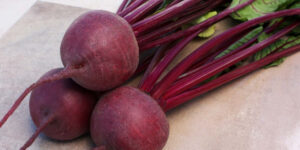
Variety Description
- ‘Nativa Berlicum’ Carrots: Known for their long, cylindrical shape, smooth skin, and deep orange color. They are typically sweet and crunchy.
Soil Preparation
- Soil Type: Loose, well-drained soil is ideal. Heavy, clay-rich soil can hinder root development.
- Soil pH: Aim for a pH between 6.0 and 7.0.
- Soil Preparation: Till the soil deeply to remove stones or debris that can obstruct growth. Enrich the soil with organic matter or well-rotted compost.
Climate Considerations
- Season: In South Africa, carrots can generally be planted throughout the year in most regions, but it’s best to avoid the hottest months.
- Temperature: Carrots prefer cooler temperatures, ideally between 16°C and 24°C.
Sowing and Transplanting
- Sowing Directly: Carrots are typically sown directly into the soil as they do not transplant well. Their long taproots can be damaged during the transplanting process.
- Seed Depth: Sow seeds 6-8 mm deep.
- Spacing: Space seeds about 2-3 cm apart in rows. Rows should be spaced 30-40 cm apart.
- Germination: Seeds usually germinate in 14-21 days.
Watering and Care
- Watering: Keep the soil consistently moist but not waterlogged. Overwatering can lead to root rot.
- Thinning: Thin seedlings to about 5-8 cm apart once they are a few centimeters tall to avoid overcrowding.
- Weeding: Keep the area weed-free without disturbing the roots of the carrots.
Pest and Disease Management
- Common Pests: Look out for carrot fly, aphids, and root-knot nematodes.
- Disease Prevention: Good soil drainage and crop rotation help prevent fungal diseases.
Harvesting
- Maturity: Nativa Berlicum carrots typically take about 70-80 days to mature.
- Harvesting Signs: Harvest when carrots have reached the desired size and show a rich orange color.
- Harvesting Method: Gently loosen the soil around the carrot and pull carefully to avoid breaking the root.
Tips for South African Growers
- Microclimates: Consider your specific regional climate; coastal areas may have different planting windows than inland areas.
- Water Conservation: In dryer regions, use mulching to conserve soil moisture.
Remember, while these are general guidelines, local conditions and experiences might require adjustments. Consulting with a local agricultural extension service or experienced local gardeners can provide additional insights specific to your area in South Africa.





Reviews
There are no reviews yet.